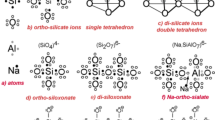Abstract
Industrial rejects are considered secondary resources for several applications involving recovery of mineral values, preparation of low-cost precursors for onward processing as well as raw materials for product development. The scope of utilization of industrial rejects broadly considers material detoxification, process efficiency, overall economics, energy use, impact on environment and the extent of byproduct generation. Aluminium, steel, power and biomass-based industries seemingly generate solid rejects at various stages of production process and remained unusable leftover material. In recent past, selectivity of material input based on synergistic utilization of industrial rejects of different origin has been found useful for converting rejects in to quality product. Choice of making mix designs based on chemical and mineralogical balance among the reject material enabled reduced consumption of commercial ingredients. Also, the choice of selectivity in raw material input provide flexible control in the regulation of physical properties of geo-polymer products such as crushing strength, surface finish, porosity, water absorption, efflorescence and leaching properties. Products of hard, light-weight and multi layered type comprising single, double and tertiary component mix design used for develo** geo-polymer based products which are useful for interior and exterior construction needs such as flooring, walling, decoration, paving etc. It is observed, geo-polymer made from the combination of alumino-siliceous industry rejects are a cleaner source of raw material input for low-carbon infrastructure generation which holds ample scope for consuming large volume of underutilized industrial leftover.
Access this chapter
Tax calculation will be finalised at checkout
Purchases are for personal use only
Similar content being viewed by others
References
Jutzi P, Schubert U (ed) (2003) Silicon chemistry from the atom to extended systems. Wiley-VCH, Weinheim
Corriu RJP, Jutzi P (ed) (1996) Tailor-made silicon-oxygen compounds. Vieweg, Braunschweig
Favero G, Jobstraibizer, P (1996) Coord Chem Rev 149:367
Thakur RS, Das SN (1994) International series on environment−red mud analysis and utilization. Wiley Eastern Limited, New Delhi
Font A, Soriano L, Pinheriiro M, Tashima M, Monzo J, Borrachero M, Paya J (2020) Design and properties of 100% waste-based ternary alkali-activated mortars: blast furnace slag, olive-stone biomass ash and rice husk ash. J Cleaner Prod 243:118568
Sukmak P, Sukmak G, Horpibulsuk S, Setkit M, Kassawat S, Arulrajah A (2017) Palm oil fuel ash-soft soil geopolymer for subgrade applications: strength and microstructural evaluation. Road Mater Pavement Design 20(1):110–131
Guades E (2016) Experimental investigation of the compressive and tensile strengths of geopolymer mortar: the effect of sand/fly ash (S/FA) ratio. Constr Build Mater 127:484–493
Gout B, Pan D, Liu B, Volinsky AA, Fincan M, Du J, Zhang S (2017) Immobilization mechanism of Pb in fly ash-based geopolymer. Constr Build Mater 134:123–130
Huyen VuT, Gowripalan N (2018) Mechanisms of heavy metal immobilization using geopolymerization techniques–a review. J Adv Concr Technol 16:124–135
Palomo A, Grutzeck MW, Blanco MT (1999) Alkali-activated fly ashes a cement for the future. Cem Concr Res 29(8):1323–1329
Xu H, Deventer JSJV (2000) The geo-polymerisation of alumino-silicate minerals. Int J Miner Proc 59(3):247–266
Davidovits (1994) High-alkali cements for 21st century concretes Paper presented at the V. Mohan malhotra symposium on concrete technology: past, Present and Future University of California Berkeley
Bureau of Indian Standards (BIS) (1992) Common burnt clay building brick specifications. IS 1077. New Delhi, India
Bureau of Indian Standards (BIS) (1992) Methods of tests of burnt clay building bricks-determination of compressive strength, water absorption and efflorescence [Third Revision]. IS: 3495 Part-I-III. New Delhi, India
Rickard WDA and van-Riessen A (2014) Performance of solid and cellular structured fly ash geopolymers exposed to a simulated fire. Cement Concr Comp 48:75–82
Sanjayan JG, Nazari A, Chen L, Nguyen GH (2015) Physical and mechanical properties of lightweight aerated geopolymer. Constr Build Mater 79:236–244
Acknowledgements
The authors thank the Director, JNARDDC for permission for publishing the work. Science & Technology Wing, Ministry of Mines, Government of India and M/s. Swarnalatha Holdings, Raipur is acknowledged for financial support to the project on “Synergistic utilization of aluminium industrial wastes for development of geo-polymeric building materials”.
Author information
Authors and Affiliations
Corresponding author
Editor information
Editors and Affiliations
Rights and permissions
Copyright information
© 2021 The Author(s), under exclusive license to Springer Nature Switzerland AG
About this chapter
Cite this chapter
Mohamed Najar, P.A., Karn, A., Sakhare, V., Chaddha, M.J., Agnihotri, A. (2021). Value Addition of Alumino-Silicates: Consolidation of Mining Rejects and Industrial Slag by Geo-Polymerization. In: Randive, K., **le, S., Agnihotri, A. (eds) Innovations in Sustainable Mining. Earth and Environmental Sciences Library. Springer, Cham. https://doi.org/10.1007/978-3-030-73796-2_4
Download citation
DOI: https://doi.org/10.1007/978-3-030-73796-2_4
Published:
Publisher Name: Springer, Cham
Print ISBN: 978-3-030-73795-5
Online ISBN: 978-3-030-73796-2
eBook Packages: Earth and Environmental ScienceEarth and Environmental Science (R0)




